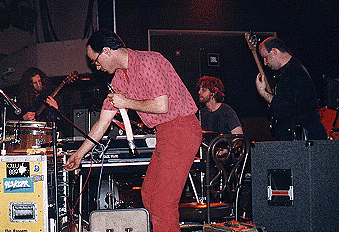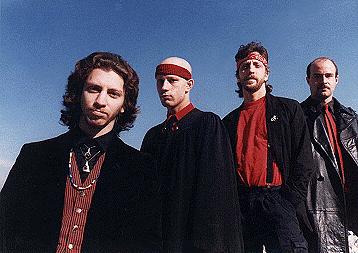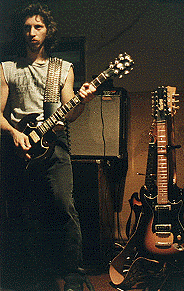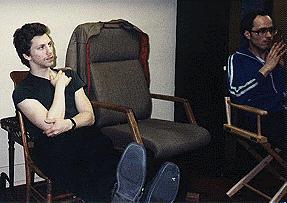Rehearsals were the time to experiment with new ideas, new techniques. Rehearsals were like athletes training for a sports season or an event. They never play the same games twice, do they? The rules might be the same, but the performances will vary with the opposing factors involved. For a sports team, the opposing factors are things like the skill of the opposing team, the weather, etc.; for us it was fighting fatigue (we all worked straight jobs, even when recording albums and taking every available show), coming up with good ideas, fighting frequently ignorant sound people, club owners and audiences for some consideration and respect; so, the usual, but worse because of what an anomaly we were on the club scene. Rehearsals allowed us to train for that part back there about good ideas.
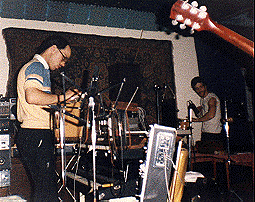
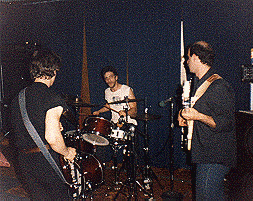
Paper Bag rehearsing at Humphrey's studio in 1986. This is where the band practiced and recorded, from the very first rehearsal in 1983 until Humphrey shut down about 4 years later. This is where most of "Ticket To Trauma", all of our previous independent cassette releases, and the first 7 radio sets were recorded. You can see that we are set up to face each other- communication was totally essential here. Note Kenny's amazing array of equipment- this picture scarcely does it justice, but you can see the music stand draped with tape loops in the foreground at the left. Photos: Steve Shaw.
We experimented with improvising in various musical styles, with textures, with combining ideas which none of us had heard combined before. Here, we all got to try to force the other guys to play in our favorite styles. Each rotation took much longer than at a live show, as we tried to hash through our ideas with the other members. The intent was that these newly learned skills or rehearsed styles would spontaneously turn up live; sometimes they did. But many was the time when a gem would come up in rehearsal and disappear into the anals (sic) of history. Luckily, we taped most of our rehearsals.
